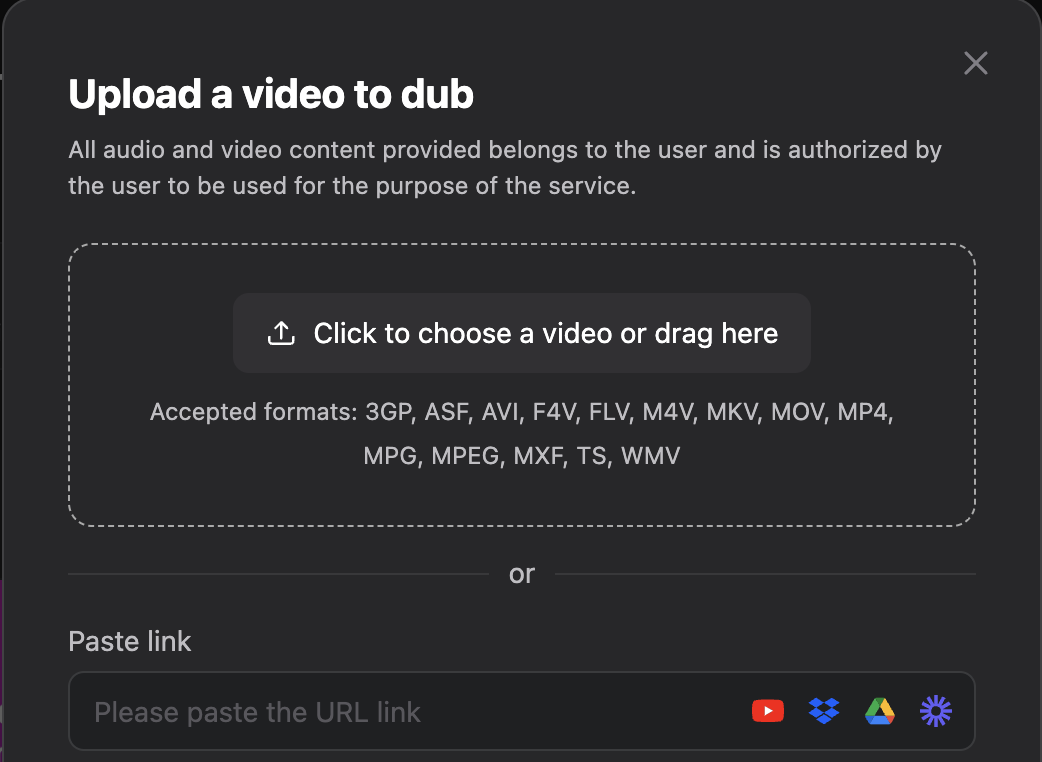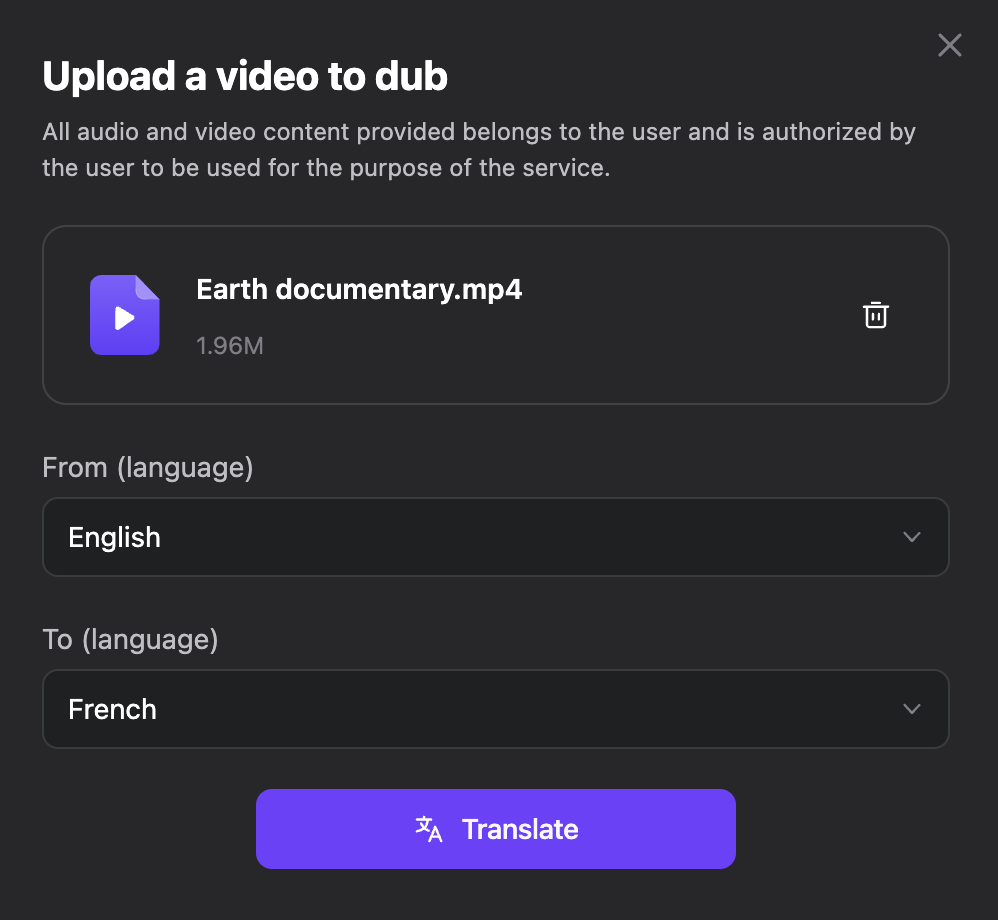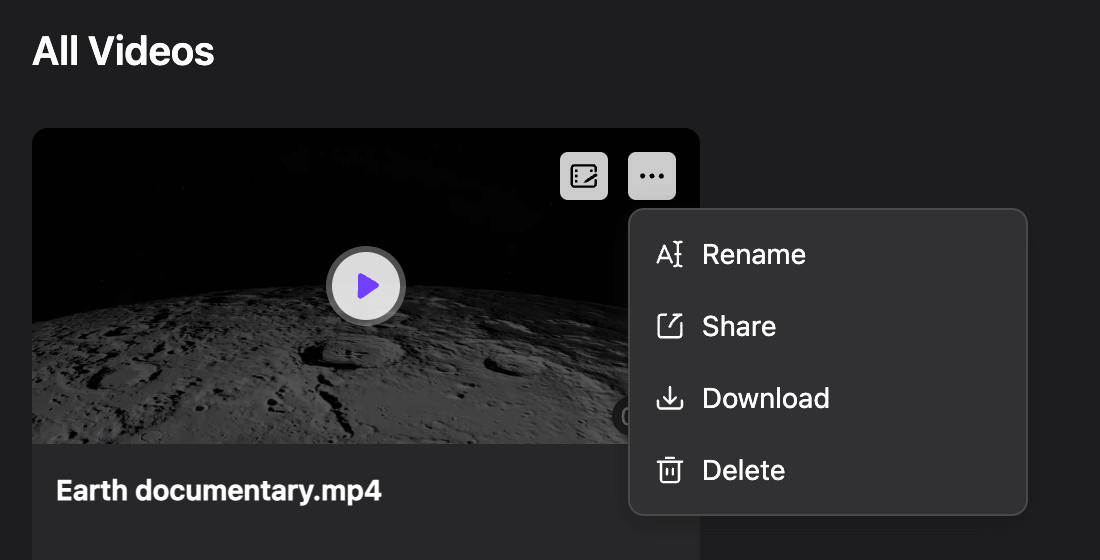
Advertising Translation 101: Complete Guide to Multilingual Ads
Instantly translate your video into 15+ languages with Notta Showcase, reaching a global audience has never been easier.
Video ads are part of our daily lives. You find them on billboards, social media, and just about everywhere you turn on the internet. And with English being the most spoken language in the world, it is not surprising that most ads are in English.
But how do you reach non-English speakers, who make up the majority of the internet?
Well, this is easily achievable with advertising translation, which involves converting the ads to the language of your target audience. However, there is more to a successfully translated ad than just language replacement.
In this guide, we will explain how to quickly translate and localize your video ads for audiences around the world. Simply follow the steps carefully, and your multilingual ads should be a success.
What is advertising translation?
Advertising translation is the process of converting marketing and advertising content from their original production language to another in a way that resonates with the target audience. This includes translating various types of ads, such as print, digital, and video ads.
Beyond mere word-for-word translation, advert translation requires adapting the content to suit the cultural and linguistic preferences of the audience.
Why is advertising translation important for businesses
There are so many benefits with virtually no downside to translating ads. Below are some of the notable advantages.
Increased market reach
This is probably the most significant advantage of having multilingual ads. If you run English-only ads, you are missing out on much more than you are getting. By translating advertisements into multiple languages, companies can reach potential customers who might not understand the original language, this also leads to increased sales.
Builds brand credibility
One of the best ways to build trust in your brand is to present your content in a language that resonates with your target audience. A study shows that about 73 percent of consumers prefer products with information in their native language.
This can enhance the brand’s reputation and build trust among international customers, showing that the company values their needs and preferences.
Reduces ads cost
Unlike the US, which is the largest market for English ads, other regions boast considerably low costs-per-click (CPC). This means it costs less money to get users to your website from your translated advertisements in other regions, and the conversion rate is just about the same.
With this low CPC, the return on your ads spend will be considerably higher. Add this to the fact that you only need to translate a single video into different languages and not create different ads, and you can save a lot of money.
Improved customer engagement and CTR
Localized advertising can significantly boost customer engagement by making content more relevant and relatable. Such ads tend to boast better click-through, conversion, and lower bounce rates.
How to translate video ads into multiple languages easily
Gone are the days when you needed to go through the transcription, translation, re-recording, and editing process in order to translate video ads into different languages. Thanks to AI, you can now convert your adverts into any language of your choice with a few clicks of the mouse.
One effective piece of software that automates advertising translation is Notta Showcase. This excellent tool uses advanced machine learning to translate video ads into 15 of the world's most spoken languages, including English, Chinese, Japanese, and Spanish. This puts you in the position to tap into the largest markets in minutes.
What's more, Notta Showcase has a voice cloning feature that helps you maintain the tone and style of the original speaker in your ad. With this, you can keep a consistent tone across your ads, regardless of language.
To create multilingual ads with Notta Showcase, follow the steps below:
Step 1: Upload your video
Once you launch Notta Showcase, click the ‘Upload Files’ button in the upper left corner. Select the ad you want to translate from your device, or paste a link from Loom, Google Drive, YouTube, or Dropbox.

Step 2: Start translation
Select the source and target language from the list of supported languages and click the ‘Translate’ button to start translating the video ad.

Step 3: Review and export your video
After the translation process, review the video to ensure it matches the desired quality. Finally, export the video to your device.

Quick and straightforward without costing an arm and a leg!
Best practices for translating ads
Advertising translation is more localization and adaptation than anything else. And to create fully localized advertisements, you need to consider the factors below.
Know your audience
This is the single most important tip for a successfully translated ad. You need to understand the characteristics of your target market to know how to adapt your content to suit them. Pay attention to their tradition, taboos, and other cultural preferences to avoid making detrimental mistakes in your advertisement.
Don't just translate, transcreate
Transcreation goes way beyond just translation. It is a blend of translation and creativity that aims to localize every aspect of your ads and brand.
While your core message and intent remain the same, with transcreation, every element in your ads, including the image, statistics, strapline, brand name, and even logo, will be considered for localization and can be changed if necessary. This is to ensure that consumers in your target countries relate to your advertisement just like or better than the original language.
Pay attention to language intricacies
Aside from transcreating your ads, you need to adapt the content to meet the linguistic and cultural preferences of your target audience. For a start, check the linguistic colloquium, cultural references, humor, and other aspects of the translated script to ensure it is right for your audience. You should also pay attention to dialect, pronunciation, and usage of words in similar languages.
Consider your translation length
Another important aspect to consider carefully when creating multilingual ads is the length of your translation. This has more to do with the onscreen texts that need to be localized. You should know that the words in the original advert were carefully chosen to fit spaces to create the perfect ad.
This can be different after translation, as 18 words in English can be equivalent to about 25 in German. In this case, you might need to change some words or even the whole sentence to something that fits better without altering the general message.
Prioritize audiovisual elements
If you are working on a video ad, you must look beyond just the words and texts. Consider the visual elements, such as the color and images, to see if they suit the culture of your target audience. This is because combining some colors or images might be offensive in certain regions.
Also, you need to consider the type of tone and style to use for the audio. Do you need a female or male voice? What age range will be the best for your audience? Will the translated speech's length fit with the video's visual elements? These are some of the questions you must answer when translating advertisements.
Choose the best advertising channel
After translating your ads, consider the channel your target audience uses most. If you are looking to reach older people, consider TVs as your advertising medium.
However, if you are targeting the younger generations, social media is a sure bet, as most popular platforms average hundreds of millions of active users daily. So, research and position your content on the best platform that gives it the highest chance of discoverability.
Expand with multilingual ads
Advertising translation is one of the quickest ways to achieve globalization. Every indication shows that there are many benefits to having multilingual ads, as they exponentially increase your reach, thereby driving more sales.
While translating your ads might have been challenging in the past due to the time and resources required, AI-powered software like Notta Showcase have revolutionized the process, and you can have your ads in multiple languages in a few minutes. To make things better, this tool is relatively cheap and does not compromise on quality.